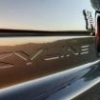Evo 6.5 Mak Version
Announcements
-
Similar Content
-
Latest Posts
-
By Dose Pipe Sutututu · Posted
Have a read of this: https://www.energy.nsw.gov.au/households/rebates-grants-and-schemes/household-energy-saving-upgrades/connect-your-battery-virtual Just one thing, your battery setup also must be supported by the retailer, at the moment for Fox Ess, only Amber supports it however that should expand with time. -
By Murray_Calavera · Posted
I've never heard of this before, how does it work? -
By Watermouse · Posted
Silly, You need to edit your posts with some “HA” quotes
-




Recommended Posts
Create an account or sign in to comment
You need to be a member in order to leave a comment
Create an account
Sign up for a new account in our community. It's easy!
Register a new accountSign in
Already have an account? Sign in here.
Sign In Now